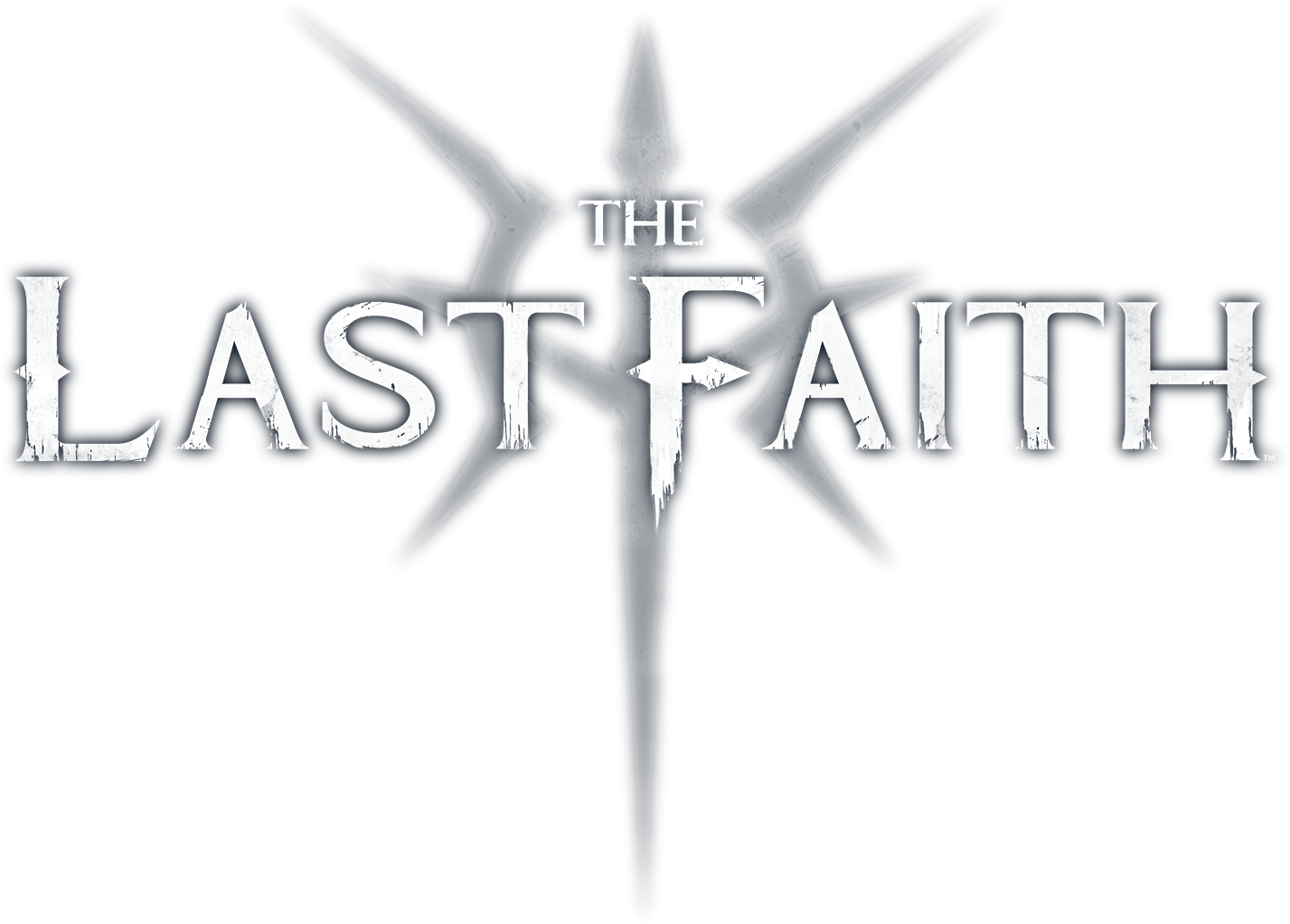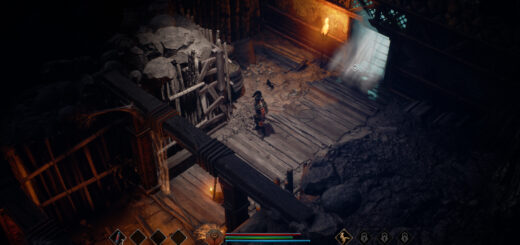The Last Faith Review
Keepin’ the Faith
Amid the booming Metroidvania landscape, developer Kumi Souls Games has thrown its hat into the ring with The Last Faith, a fast-paced side-scroller attempting to set itself apart from the rest with a strikingly gothic pixel-art aesthetic and dark, religious theming throughout. While neither of those aspects are wholly unique or original, the game nonetheless delivers the goods, providing a mostly smooth and satisfying experience even if a few bothersome blemishes remain that detract in some noticeable ways.
Anyone who’s ever picked up a similar title will feel right at home in The Last Faith. However, this is far from a negative; while the gameplay is familiar, it is a well-oiled combat and exploration loop that makes besting baddies and discovering secrets a satisfying experience. Protagonist Eryk begins the game able to jump, dodge-roll, and wield a melee weapon, with other abilities like a parry move and a secondary weapon slot for long-range armaments soon following. There are many weapons to discover and upgrade over the course of the twenty-hour adventure, even including a number of magic spells to wield.
The game also infuses a number of Soulslike elements into its gameplay. Enemies grant Nycrux, the in-game currency used for leveling up Eryk, purchasing items and armaments, and upgrading said gear (though the latter requires special upgrade materials as well). Falling in battle means all currently carried Nycrux is dropped, but it can be reclaimed before players die a subsequent time. Resting at save points heals Eryk but also respawns all slain enemies, while consumable items like healing charges and ammunition, of which Eryk can only carry a limited amount, are replenished from what’s in stock. Players are given four character classes to choose from at the game’s outset — Brawler, Rogue, Stargazer, or Marksman — though they appear to differ only in their initial skill point allocation, so it is quite easy to gear oneself toward a different discipline later on as no character paths are truly locked off.
The darkly grim and gothic world of The Last Faith is vast and, as can be expected from this genre, littered with secrets to stumble upon, hidden behind breakable walls, atop just-out-of-reach platforms, or behind locked doors that require locating the right item to open. However, the game’s map isn’t exactly the most helpful when it comes to keeping track of these discoveries. While the rather rudimentary map fills in section by section during exploration, there is no percentage marker to inform the player of their progress, nor are all locations of interest automatically marked. True, it is possible to place one’s own markers onto the map, and locked doors are clearly visible, but many out-of-reach secrets become very difficult to locate again later once Eryk has acquired some new traversal skills. There’s also the fact that some rooms simply cannot be fully explored, so those sections of the map will always look somewhat incomplete, causing some fruitless late-game backtracking to these locations just to double-check them for a final pesky item needed for a quest. It’s by no means a game breaker, but the absence of modern conveniences can be sorely felt at times.
On the other hand, the moment-to-moment gameplay proceeds along very smoothly and feels balanced, provided one does not stray into areas one is not meant to be yet. Following the intended progression means enemies are generally manageable, and should Eryk find himself at an extreme disadvantage, it’s probably due to the player losing their way and walking into deadly territory before Eryk is ready for it, which is surprisingly easy to do. At one point, the intended way forward required backtracking to a certain point in the current area after defeating its boss, where the path forward would be revealed. However, this was neither communicated nor indicated on the map, so it became quite easy to fast-travel into uncharted, high-level territory instead, running into a sudden wall of frustration for an hour or two before giving up and scouring the map for the true path forward. For the most part, however, progressing through the game is an intuitive process.
Whereas Eryk usually feels well up to the task of taking down common mobs, bosses in The Last Faith can be a handful to deal with. Boss encounters are well designed, enjoyable set pieces that force players to contend with a variety of attack types, from screen-spanning weapon flurries to large and flashy AoE attacks, and even magic barrages that might cause a meteor shower to rain from the sky or fire lances to erupt from the ground. Learning the various tells of a boss’s move set and how to effectively deal with each phase of their attacks can take several attempts but is by and large quite fun, and most bosses will even make their move set even deadlier once down to half-health. Should a particular boss cause a player to become stuck and burn through their entire stock of health potions, the developers have included a helpful feature where a small number of health charges will always spawn just outside a boss door if the player drops below a certain number, ensuring at least some healing ability during the upcoming battle.
The Last Faith does attempt to inject a bit more world-building into its campaign than what might be typical for this type of game, though this is marked by at best mixed results. Eryk’s quest — who he is, why he takes on the trials that he does, what drives him forward — is only vaguely established. The world of The Last Faith has been harangued by those in power — the gods and the clergy who, in name, serve them. But corruption lives in the hearts of those who would lead, and thus the common folk of the land suffer, used and cast aside. Without further explanation, Eryk has been chosen to hunt down evil and set things right, suffering from a curse, an affliction of the blood. However, all this set up is at best glossed over quickly, and doesn’t have any further impact on game or gameplay beyond “bad things are happening, set forth to do something about it”.
The game contains quite a few NPCs that Eryk will run into over the course of his quest, who have surprisingly many things to discuss with him. All characters are fully voiced, with little to criticize from the performances, though one voice actress in particular is seemingly reused to voice nearly every single female character. Unfortunately, much of what they have to say seems to pertain more to themselves, providing flavor and world-building rather than an actual narrative, and what little concerns Eryk smacks of the same generic information as the rest of his narrative. What’s worse is that there is some hard-to-define quality to the dialog that makes it incredibly hard to follow, be it a lack of world context to view it in, no true thematic meat in the words they say, or just an overuse of rambling language. Very little of the narrative penetrates beyond the “in one ear and out the other” memory layer.
Where substance comes up lacking, style is never in short supply in The Last Faith. The game sports an impressive pixel-art aesthetic, replete with lots of character animations and multi-layered backgrounds which themselves feature a large amount of atmospheric detail. Visual flourishes like full-screen dialog portraits and animated cinematics are impressive, and in general all elements work in tandem to create a feeling of a diseased land whose faith has been bastardized and turned back upon them. Though Eryk’s journey takes him through indoor spaces like manors, crypts, and dungeons just as much as outdoor locations, detailed touches are omnipresent and elevate each location so that no area ever feels generic. Enemies even come with their own kill animations, which trigger randomly by displaying a button prompt once their health bar has been depleted; these bits of flair don’t offer anything in the way of extra spoils but let Eryk dispatch a foe with particular brutality, in one case grabbing an enemy’s blunderbuss before unloading it point-blank into their own face, another time pinning an airborne imp on the ground with a boot heel while ripping its wings off its body. The game isn’t an outright gore fest, but these moments make it clear that it doesn’t shy away from the darker side of pixel art.
The Last Faith is less about revolutionizing the Metroidvania formula and more about staying true to its various elements, putting smooth gameplay and pretty visuals near the top of the list. Combat delivers options for various playstyles, even if the generally even difficulty doesn’t particularly warrant having to go outside of the tried-and-true melee approach. Bosses may not be pushovers, but there’s fun inherent in working out how to best each one, and the game is lengthy enough (and has enough hidden secrets on top of it) to feel a full, satisfying package. While some elements didn’t come off as well as planned — world building and narrative fall flat despite obvious attempts to bring them more into the spotlight, for example — the overall package will still go down a treat for Metroidvania fans, and offers plenty to even bring new followers into the fold.
Disclosure: This review is based on a free copy of the game provided by the publisher.


Dark and beautifully animated pixel-art aesthetic
Smooth combat with fun boss battles
A fittingly gothic soundtrack to jam along to
Story and lore remain curiously slippery to grasp despite being pushed heavily into the foreground
The map isn't always up to the task of hunting down miniscule secrets









Recent Comments